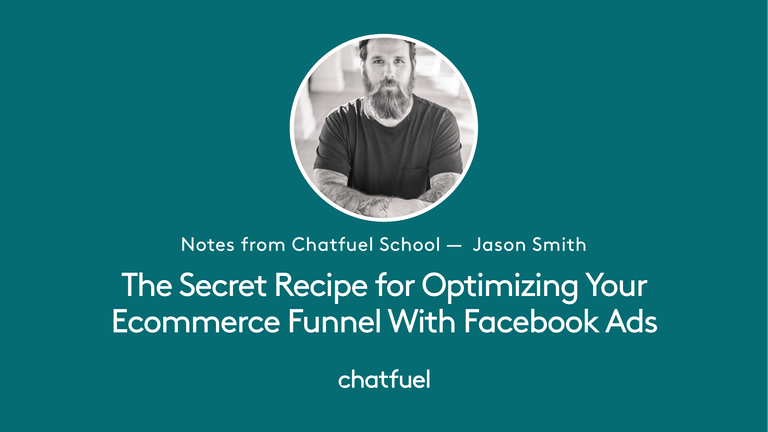
The secret recipe for optimizing your ecommerce funnel with Facebook ads
Get this expert's strategy for using Facebook ads to ignite your ecommerce store's sales.
Over Q1 of 2020, as the coronavirus morphed into a pandemic, Facebook reported “a record number of people using [their] services.” People worldwide have been quarantined at home, spending lots of time scrolling social media for both news and entertainment.
COVID-19 has affected different ecommerce niches and their Facebook ads in different ways. But there’s no denying that there are more eyes on Facebook feeds than ever. If you’ve got the resources to experiment with ads to (ethically) boost your ecommerce sales right now, read on! Jason Smith knows a thing or two about Facebook ad sales funnels. (He turned $30,000 into more than $170,000 for his small business customers)
Here’s a summary of his tried-and-true strategy for using Facebook ads to ignite your ecommerce store’s sales, whether you’re selling on Shopify, WooCommerce, or any other major ecommerce platform. It all begins and ends with this master chart.
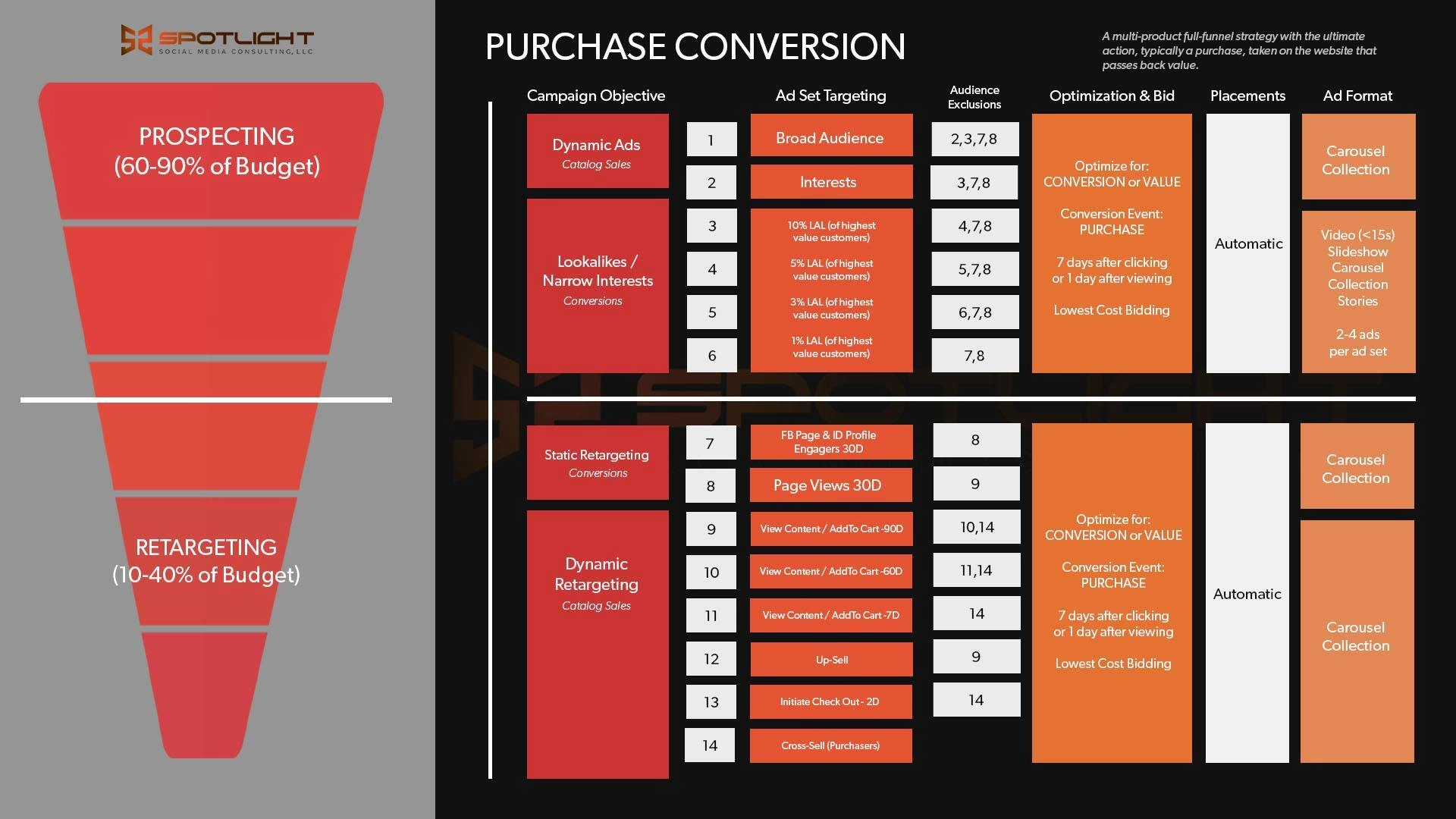
The two sections of the Facebook ads funnel
As you can see on the far left side of the chart above, Jason divides the ecommerce funnel into two parts based on how much of your budget you should spend on each.
Prospecting: the upper part of the funnel. According to Jason, ads for this part of the sales funnel should account for 60-90% of your budget. They’re intended for prospecting: getting the attention of people who have had little to no interaction with your page yet, but that fit the characteristics of prospects you want to target.
Retargeting: the lower part of the funnel. The ads in this section of the funnel should account for 10-40% of your ads budget. They’re meant for retargeting: recapturing the attention of lukewarm or even hot leads who have had some interaction with your page. Note that retargeting isn’t a process for small budgets, Jason explains. If you’re only spending $1k on ads total, for example, you likely won’t have enough users to successfully retarget.
Prospecting
In this stage of your Facebook ad strategy, Jason recommends focusing on:
dynamic ads
Lookalikes/narrow interests
Dynamic ads
Dynamic ads (catalog sales) on Facebook let you pull data from a specific product catalog on your ecommerce site and automatically insert it into ads. The Facebook ad will either showcase your most popular products, or product (s) a particular user viewed or even added to their cart. You’ll save time this way, since you don’t have to come up with the ad creative.
There are two ad-set targeting options Jason recommends for ecommerce shops here. (You should use the purchase conversion objective for both.)
The broad audience. In this case, you don’t target anyone in particular. Instead, you let your website’s Facebook Pixel do that for you based on the purchase data it has gathered.
Interests. In this case, you target users with specific interests. And contrary to popular belief, the best practice is actually to clump all of your interests together in one campaign. The Facebook system works better with the data this way, according to Jason, and it’ll target more people.
Tips on improving your dynamic ads
Exclude the right people. Audience exclusion is an important factor in any successful Facebook ad campaign. For dynamic ads, you want to exclude anyone that could overlap with your next ad-set targeting. That means excluding those who have interacted with your Facebook page or your click-to-Messenger ads in the last 30 days. You will target these people later on down the funnel. (You can see all the audience exclusions for each step in Jason’s chart above).
Choose automatic placements. Jason recommends always using Automatic placements when setting up your ads, instead of selecting manual placements on only Facebook or only Instagram. With automatic placements, your ads will appear for users on both platforms, based on their behavior. It makes your ads more likely to be seen by the right people.
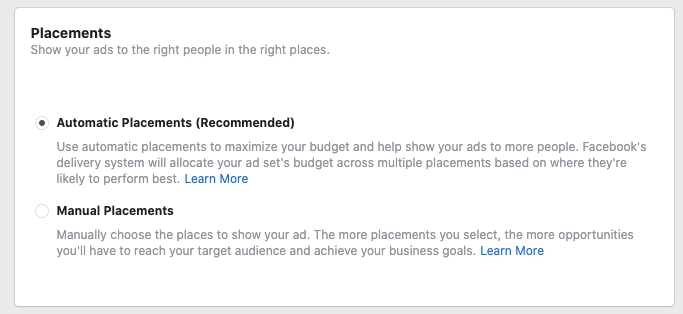
Choose the right campaign goal. You’re after conversions, so Conversions should always be the campaign goal you choose for these ads. Otherwise, Facebook will show your ad to users who may click and engage with it, but aren’t necessarily likely to convert.
Run one campaign with two ad sets. Run an ad set for the broad audience and one for the interest-based audience. It’ll help you learn how different creatives perform for different groups of users. (Remember: Make sure to exclude the targeted audience of one set from the other set’s targeting, and vice versa. Otherwise, you risk fatiguing users with too many ads.)
Lookalikes/narrow interests
An ad targeted to a Lookalike audience means it’ll reach users who are similar to your existing highest-value customers. Use purchase-event data from your Facebook Pixel for your Lookalike audiences.
💡Tip: Want to create a Lookalike audience based on your most valuable chatbot users? Export user data from the People tab to Facebook Ads Manager in one click with Chatfuel’s Segment Sync feature.
Create four different Lookalike audiences and a narrow interest-based audience within your campaign. Jason shares that your Lookalike audiences should be based on the following percent of your highest value customers:
10%,
5%,
3%,
1%.
Follow the same rule you followed for dynamic ads: Exclude the targeted audience of one set from the other set’s targeting, and vice versa. You should also exclude customers who have purchased from you in the last 30 days. The reason behind both tactics is to avoid irritating users with too many ads from you.
Tips on improving your Lookalike and narrow-interest ads
Trim the fat. When it comes to exclusions, think about how long your product lasts. Make sure to exclude customers who have already purchased from you and won’t need more of your product yet. Also exclude anyone who has already viewed or interacted with your page. That way, you don’t risk wasting ad dollars and annoying users by showing them ads that don’t fit where they’re at in the customer lifecycle. The chart at the beginning of this article will tell you which people to exclude (look to the Audience exclusions column).
Experiment with the creative format. As Jason says, “Facebook is a testing platform.” Experiment with carousels, single-image ads, video ads, etc. to see what works best.
Retargeting
In this stage of your Facebook ad strategy, you’re doubling down on the warm users who have already had some kind of interaction with your page. Jason recommends focusing on static and dynamic retargeting.
Static retargeting
With static retargeting, you want to reach people who aren’t yet hot leads, but aren’t cold either. That means you’re looking to target those who have viewed or engaged with your page in the last 30 days. These users know who you are, but maybe haven’t seen a specific product of yours yet. That’s why this is a great time to use a specific catalog of your popular products in carousel form.
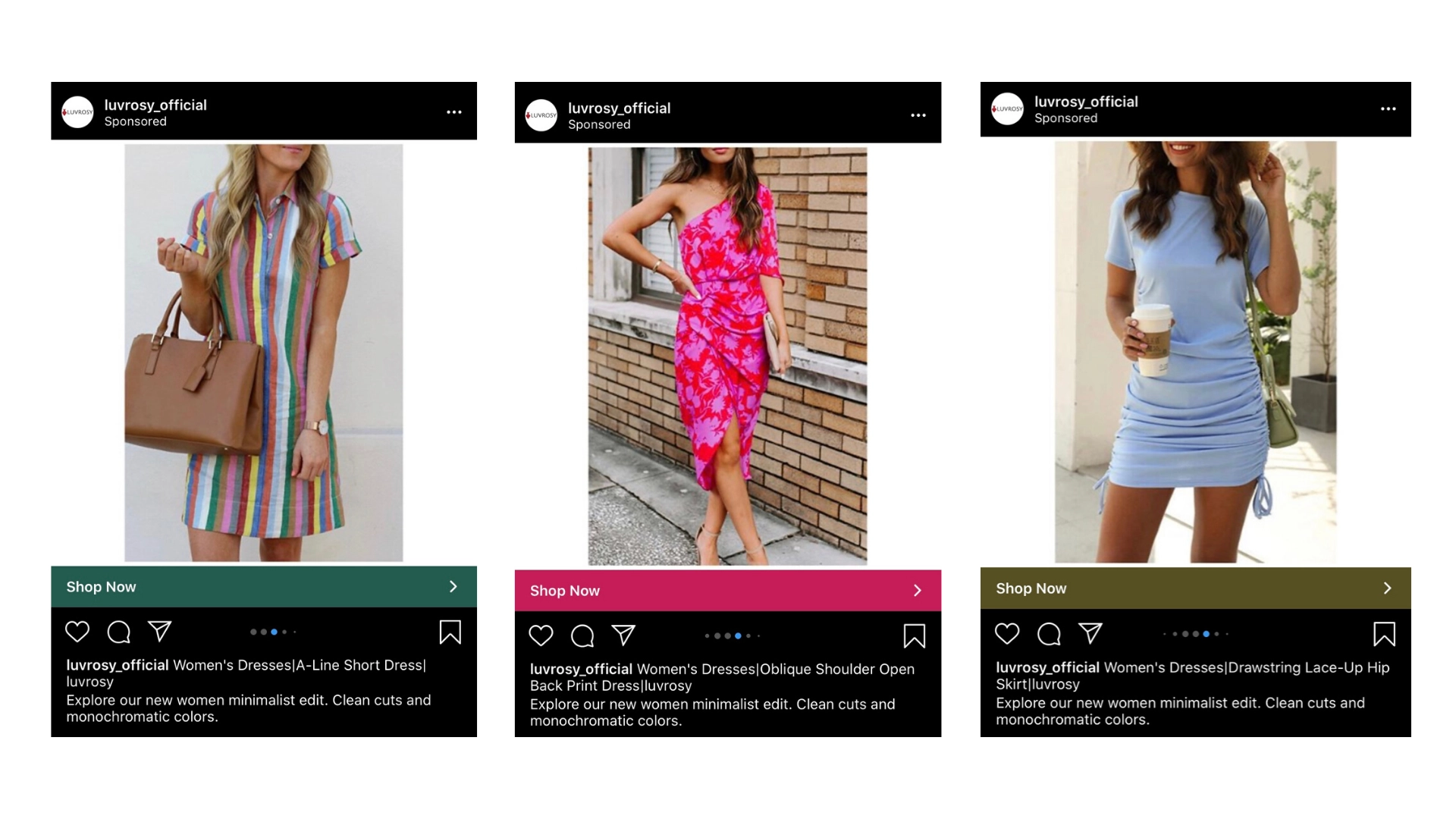
💡Tip: Static retargeting can also take the form of a sponsored message. If you go this route, make sure your chatbot is equipped to sell from there. Optimize your Welcome Message and set up your bot to get conversions.
Tips on improving your static retargeting
Don’t have too many ad sets per campaign. The best practice is to have between four and six ads per ad set active at one time. More than that may confuse the system, says Jason. Monitor your ads closely. If any aren’t performing well, you can turn them off and replace them with new ones you want to test.
Exclude the right people. Again, look to the image at the start of this article for which audiences you should include from your static retargeting ads.
Dynamic retargeting
Dynamic retargeting ads are personalized. If a user views a product or adds it to their cart on your site and then abandons it, a dynamic retargeting ad will show them that specific product again.
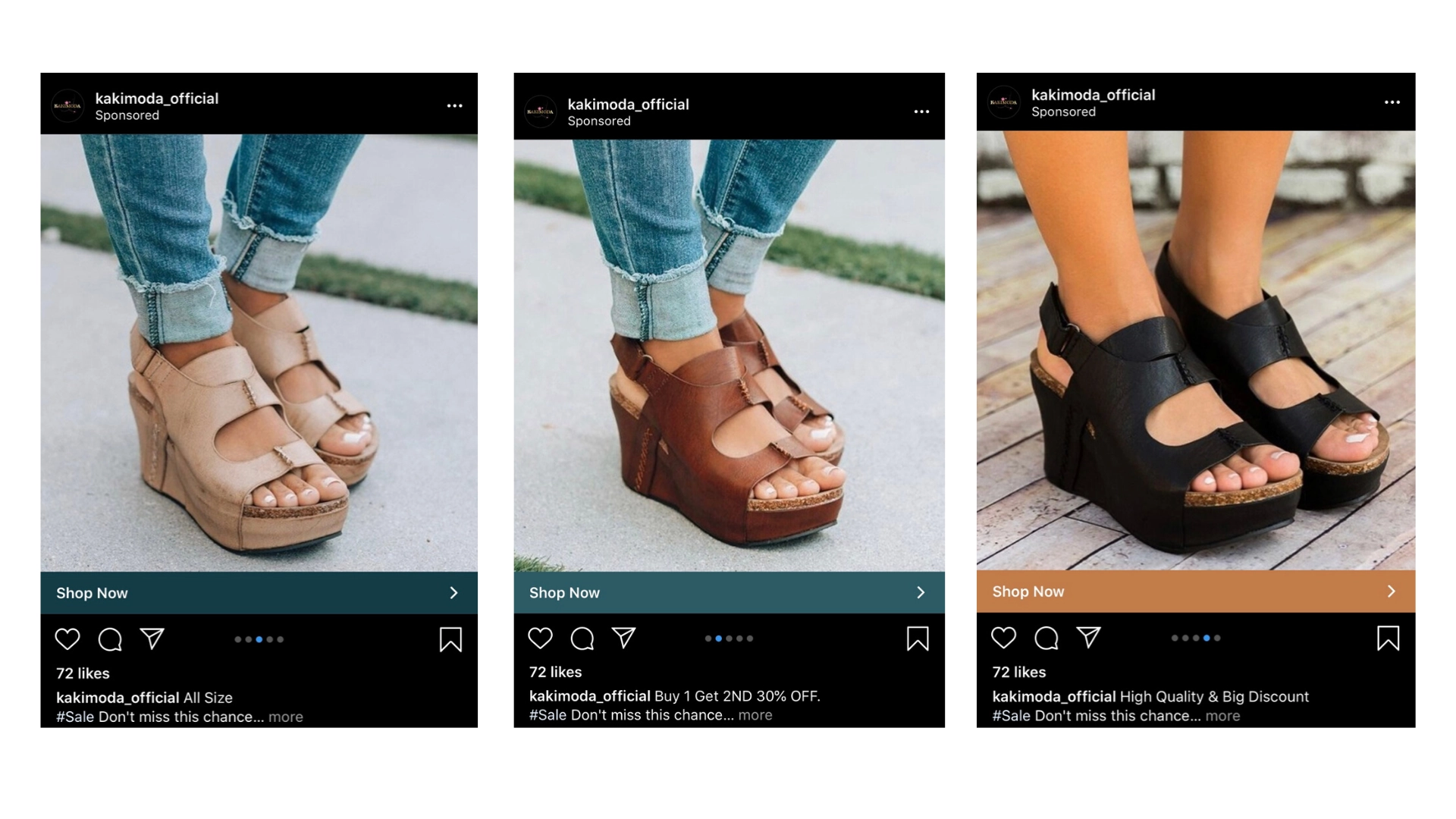
Jason recommends targeting people who:
viewed one of your products in the last 60 or 90 days
viewed one of your products in the last seven days (however, you may want to skip this one if you’re not going to spend enough to create substantial traffic for this)
added one of your products to their cart in the last seven days
purchased one of your products (so that you can to upsell or cross-sell)
Tip on improving your dynamic retargeting ads
Listen to Facebook. Facebook AdsManager will tell you if you have the audience for a particular ad set or not. Pay attention to those notifications. (And remember, as with the others, to exclude the right audiences so you don’t show too many ads to any one group.)
Facebook ads + Chatfuel
One last tip: You can harness the power of your Chatfuel bot to make the Facebook ad campaigns for your ecommerce company even more effective. We already mentioned sending data from the People tab to Facebook Ads Manager with Segment Sync to improve your targeting. You should also know about the Click-to-Messenger Ads Entry Point. It’s the easiest way to link ads to your Chatfuel bot.
With Jason’s guidance and your Chatfuel bot, you’ll be on track to run more successful ecommerce ad campaigns than ever! 📈 Not yet a Chatfuel user? Sign up for a free account today to access ALL our powerful tools and features.
